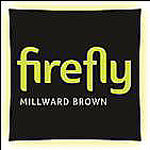
Top stories






The findings are based on research with parents and teens in Brazil, China, the UK and the US, and show a remarkable level of global agreement on what is and what is not acceptable, despite the very different advertising cultures in each of these four markets.
1. What digital advertising? When asked about advertising, most people mention TV or outdoor. When pushed, they instinctively describe online advertising as pop-ups, banners and spam, and are therefore instantly negatively predisposed to the concept of online marketing. Teens claim to be "banner blind" and prefer ads they can ignore (such as in the margins of Facebook).
2. Age colours consumer perceptions of online advertising: Children feel that they have control over their exposure to advertising online but parents are less comfortable. Both find it difficult to be specific about what is acceptable and what is unacceptable, because collectively, they aren't familiar enough yet with online advertising. All are quick to denounce pop-ups, spam and anything that slows down or gets in the way of their online experience.
3. What's unacceptable offline is also unacceptable online: Parents apply the same principles online as they do offline when it comes to issues such as safety and permissibility. Marketers need to use common sense and apply the same advertising standards everywhere.
4. There is a triangle of trust between parent, teen and regulator: Parents appreciate the controls set by regulatory bodies. It is reassuring for them to know that there are certain guidelines in place and as a result, they worry less. They also understand they can't control what their kids look at online, but they say they largely trust teens. Indeed, our teens corroborated that their parents trust them online and that they shouldn't abuse that trust.
5. Consumers understand the advertising trade off: Consumers, and children in particular, understand that they get free content thanks to advertising. Conversely, this means that if they have paid for content they don't expect brand messages unless they are properly integrated and add to the experience (e.g. real-life billboards on Gran Turismo.)
6. Don't call me, I'll call you: Advertisers must be invited to be part of each consumer's digital world. In order to be acceptable, all contact from brands needs to have been specifically agreed. The consumer needs to feel in control of the conversation.
7. Consumers think there is a time and a place for commercial messages: Email contact is ok (if agreed) but SMS marketing is largely rejected (except in China under certain circumstances). Universally, teens preferred contact to be made during school holidays rather than during school time. Don't pester; brands need to be willing to be ignored if it's not convenient as it shows more respect.
8. What's in it for me? Brands need to offer a tangible benefit to the consumer. Communications must be different, fun, engaging and/or offer something extra.
9. What are you doing with their data? People, and children in particular, are broadly positively disposed to tracking if it makes ads are more relevant. But they're nervous about how long you keep their data for. Brands need to be transparent about data storage.
10. Don't fake it! Be open, transparent and treat people with respect. Many consumers are turned off when they sense "commercial contrivance." Celebrity endorsement, for example, can backfire if the consumer instinctively thinks: "I know they don't use that product!"